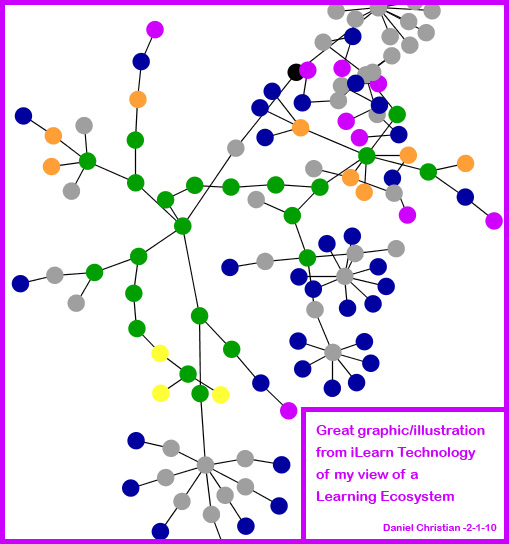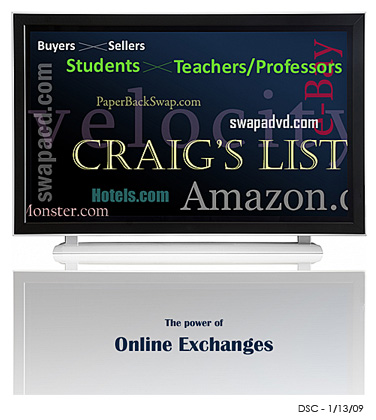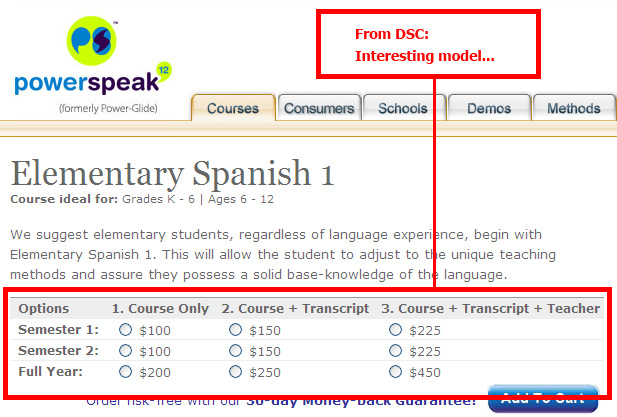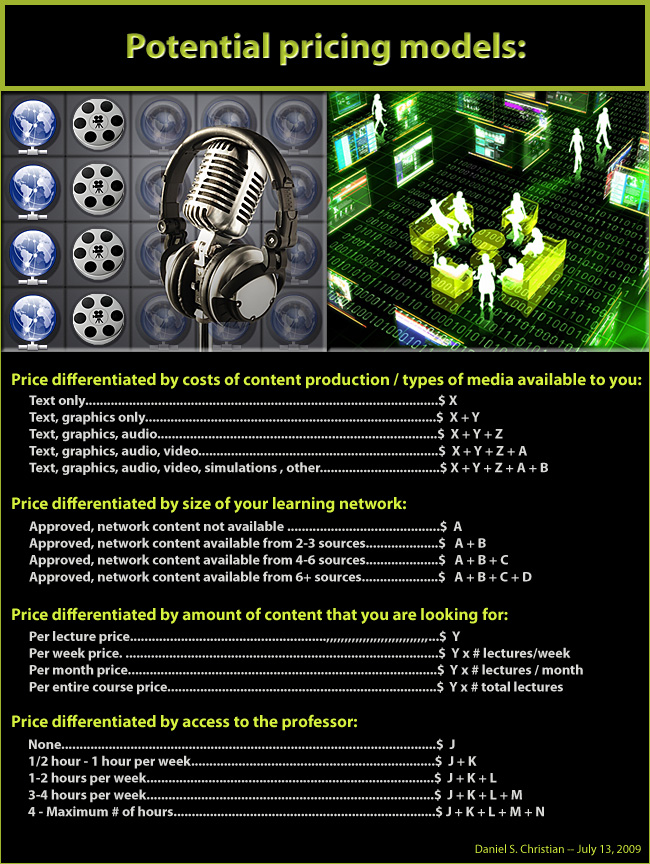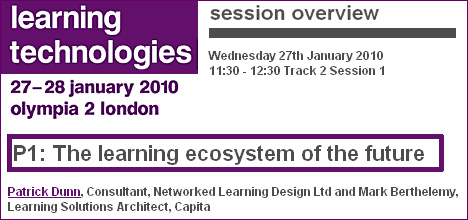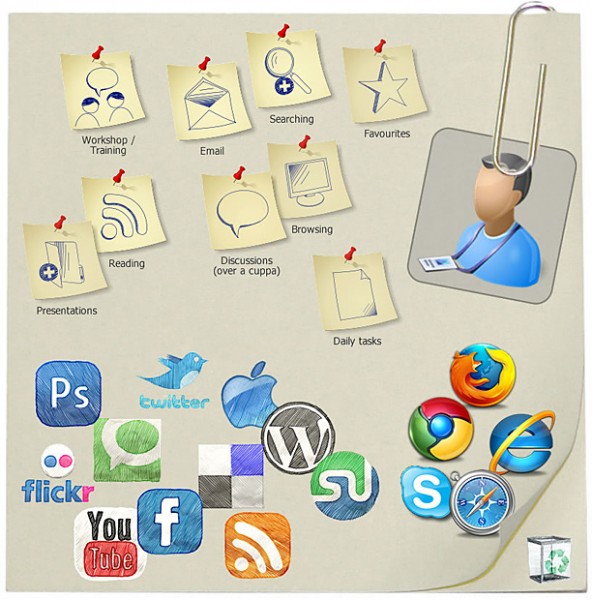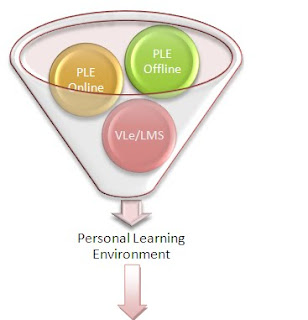From DSC:
Clicking the below graphic will launch a (rather large but brief) presentation of what my view of a learning ecosystem is.
Learning Ecosystems Handout — from Mark Berthelemy
Here’s the handout from our workshop at the Learning Technologies 2010 conference.
A paradigm shift is ahead for higher education – Lori Sturdevant, Star-Tribune
Governor Tim Pawlenty at a Jan. 15 news conference said “You’re going to have the equivalent of iTunes in higher education, where instead of buying a song for 99 cents, you’re going to be able to click on Econ 101 for probably $199 or $399,” the governor predicted. “Unleashing technology … will massively decentralize the delivery of higher education in our country. The idea that we’re going to be here 20 years from now talking about how many more buildings can we put up is going to come into conflict with this new frontier.” Bona fide education forecasters say that Pawlenty isn’t all wrong about an explosion of online learning — though they’re not as sanguine as he is about its cost-saving potential or effectiveness.
- The iPad Ecosystem — Apple iPad: Winners And Losers — from Forbes.com by Taylor Buley
Steve Jobs has a way of shaking up the technology industry. Watch these companies for the fallout.” - Apple iPad: Everything you need to know — from Stephen Downes <– way to go on the prediction here Stephen; nice work!
- Apple unveils the iPad — from vatornews.com
Tablet details revealed. Cool device, but falls short on many features - iWork apps unveiled for the iPad — from the Download Blog on CNET.com by Jason Parker
- Steve Jobs unveils $499 netbook killer — from Forbes.com by Brian Caulfield
- Apple iPad: Publishing savior? — from Forbes.com: Technology News by Kym McNicholas
- ACU plans to publish first student newspaper on Apple’s iPad — from Helge Scherlund’s eLearning News Blog
Abilene Christian University’s student-run media staff announces its commitment to produce the first paper of its kind for Apple’s iPad. Dr. Cheryl Bacon, chair of ACU’s Department of Journalism and Mass Communication, says students and faculty already are working to achieve this goal. - A closer look at Apple’s new tablet, the iPad — from wired.com
- Apple’s iPad: Is it a game-changer? — from CNN. Money. com by Philip Elmer-DeWitt
- Full Interview: John Gruber on Apple’s iPad announcement — from Spark
- iPad: Does the iPad kill the Touch? Is this a transformative tool for education? — from iear.org
From DSC:
To me, this device has the potential to really move multimedia-based communications forward. For one thing, “magazines” will never be the same again.
From Learning Technologies 2010:
P1: The learning ecosystem of the future — by Patrick Dunn, Consultant, Networked Learning Design Ltd and Mark Berthelemy, Learning Solutions Architect, Capita
Decentralizing and democratizing the creation of learning resources is radically changing the way we produce learning content. A range of tools (including those for rapid development) have the potential to reduce costs and engage learners in ways that will finally deliver on e-learning’s potential. Taking lessons from the history of learning technology and software development, the speakers will shift the “rapidization” debate away from a short-term efficiency perspective, offer a vision for the learning eco-system of the future, and present a roadmap on how to get there.
- New, diffuse learning organisations
- Software cycles; what they mean for e-learning tools
- From ‘few create, many consume’ to ‘many create, many consume’
- 21st Century knowledge management
-
The roadmap, and the systems and cultural changes required
David Hopkins’ PLE — as seen on dontwasteyourtime.co.uk
Also see the others at:
PLE / Personal Learning Environment: What’s yours like? | eLearning Blog Dont Waste Your Time
From DSC:
This is yet another valuable part of the learning ecosystem it seems to me — one’s PLE / VLE.
My Personal Learning Environment — from Mark Wigan [UK]
” Personal Learning Environments are systems that help learners take control of and manage their own learning. This includes providing support for learners to
- set their own learning goals(review)
- manage their learning; managing both content and process
- communicate with others in the process of learning
- and thereby achieve learning goals.”
…
(see Mark’s posting for further details)
Tips & Tricks for Effective Lecturecasting — from ProfHacker.com by Ethan Watrall
Lecturecasting is all the rage these days. And whether you are lecturecasting specifically for a class (either online, face-to-face, or any combination thereof), or are putting your lectures out to the wider public on a platform such as iTunes U, it takes a lot of work to get your lecturecasts to the point where they are effective vehicles for your content.
The CMS and the PLN — from Jon Mott and his “The End In Mind” blog
From DSC:
These two elements are part of our learning ecosystem — at least at this point in time. As Jon points out, they each have their strengths and weaknesses. It will be interesting to see — given time — what the trends become concerning these two elements of the ecosystem.
Sharing . . . the Journey
A Prequel to The World Is Open: How Web Technology Is Revolutionizing Education — from Curtis J. Bonk, Professor, Indiana University









